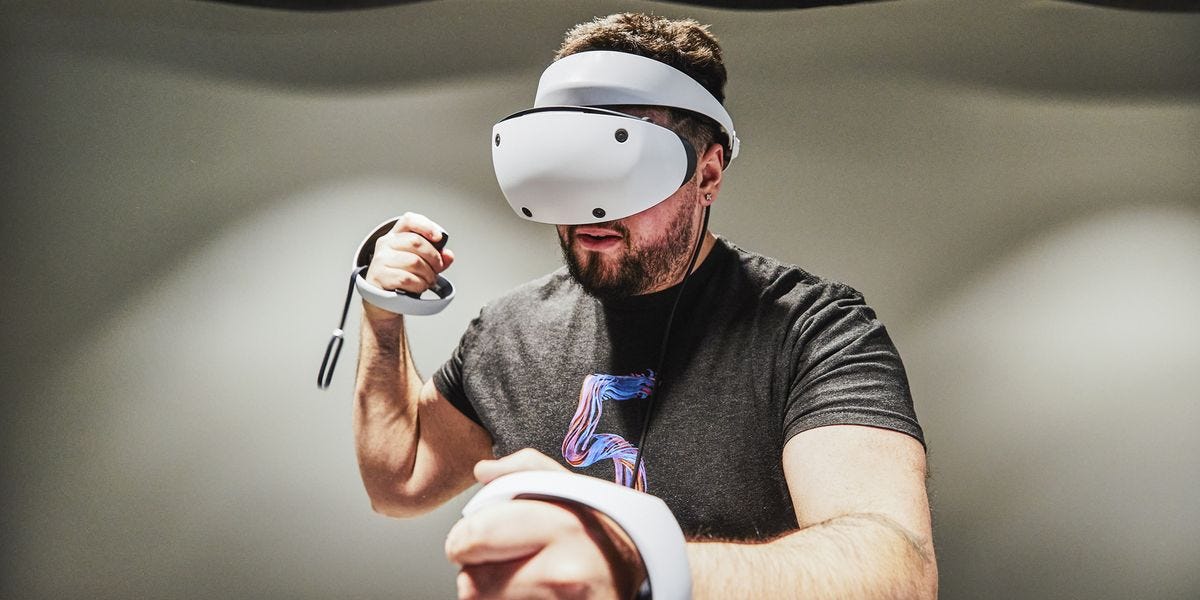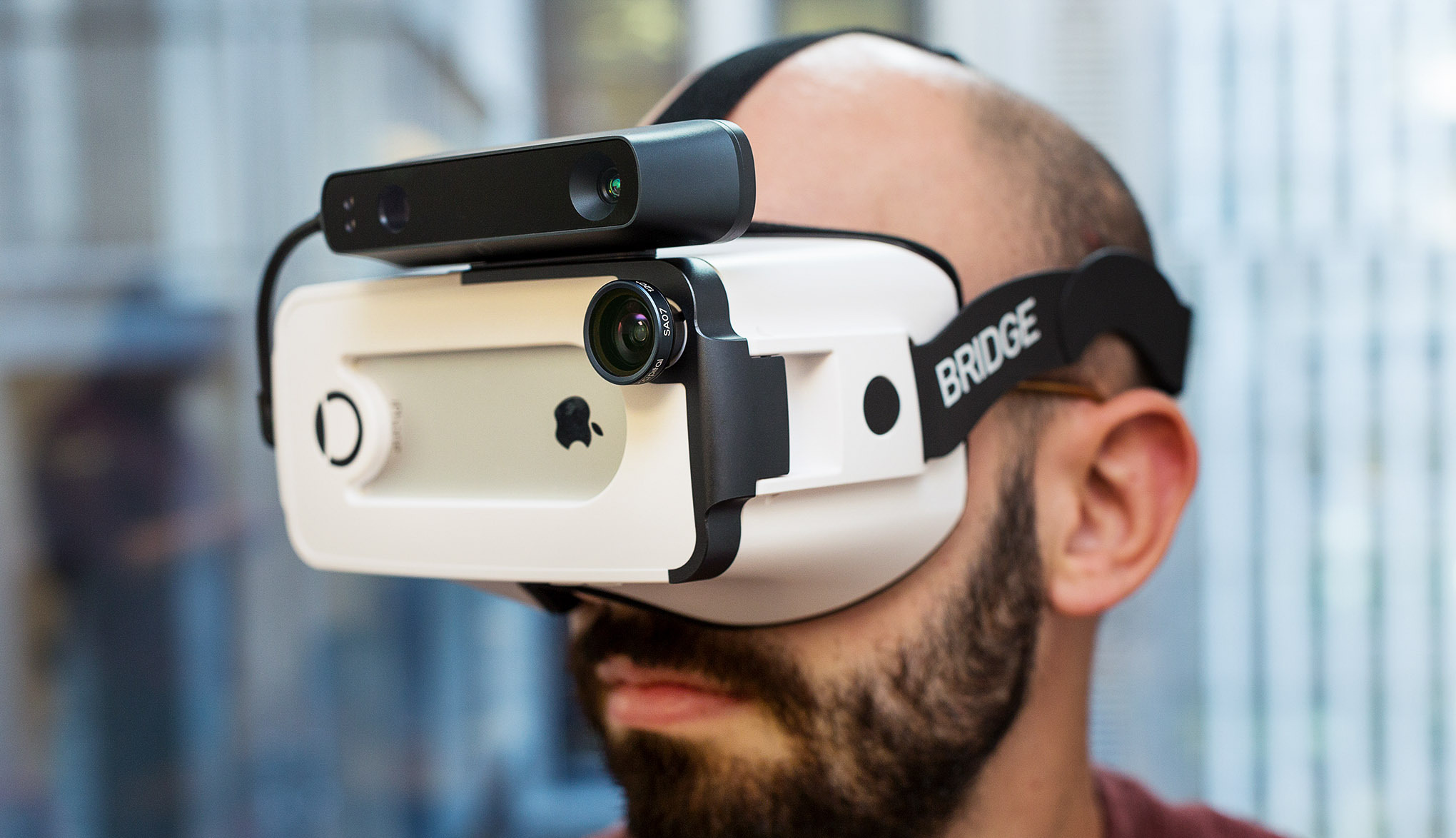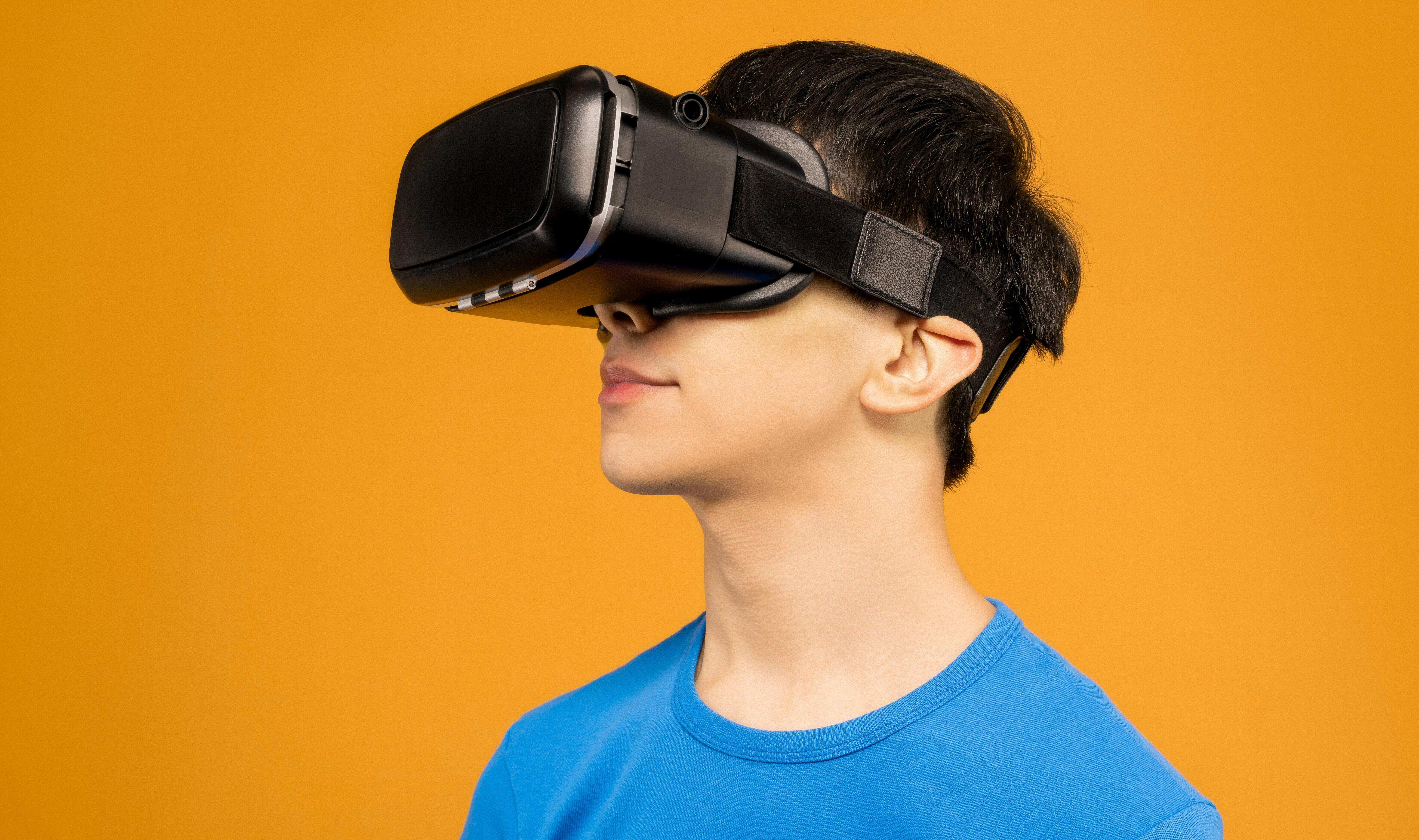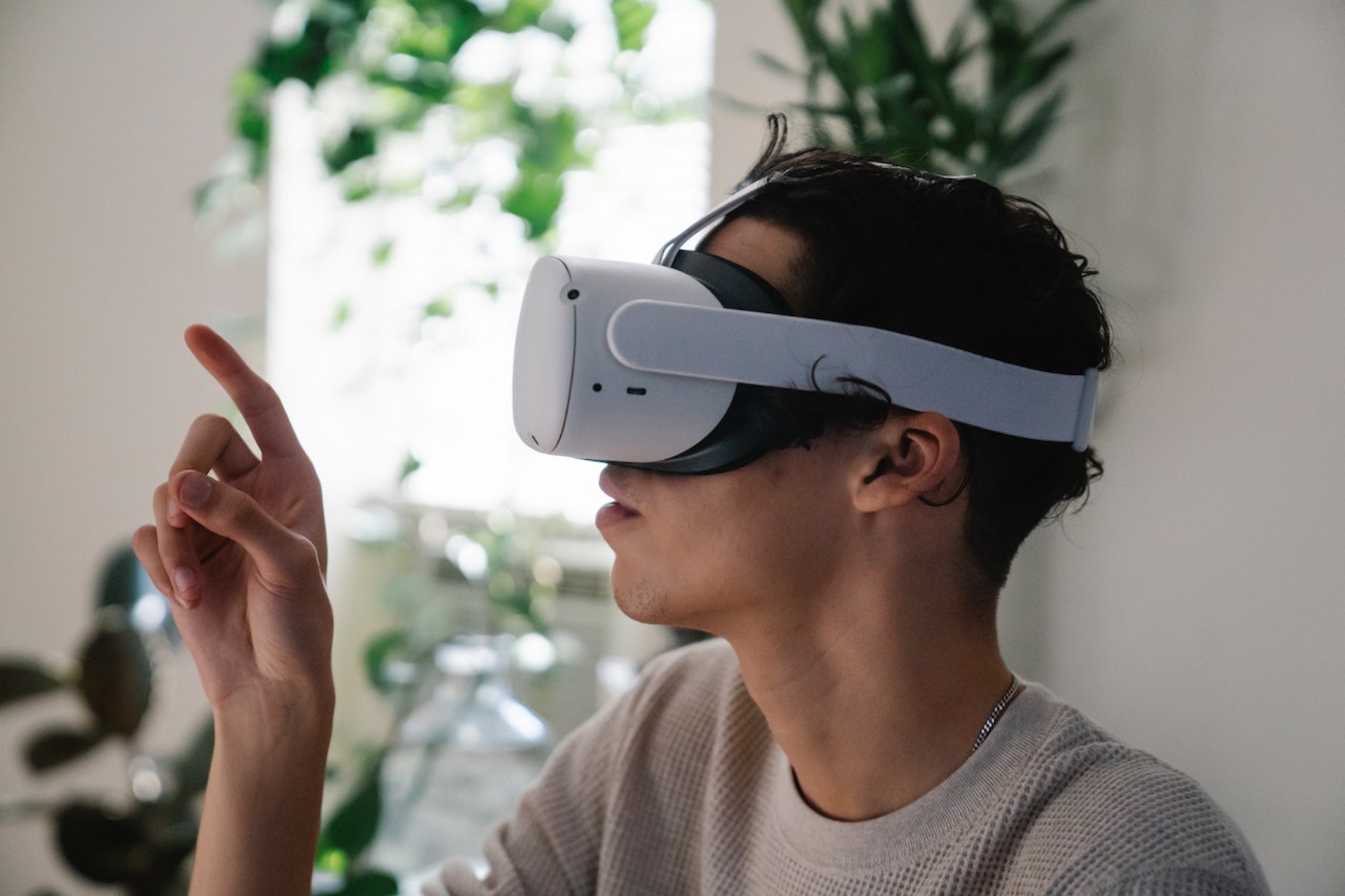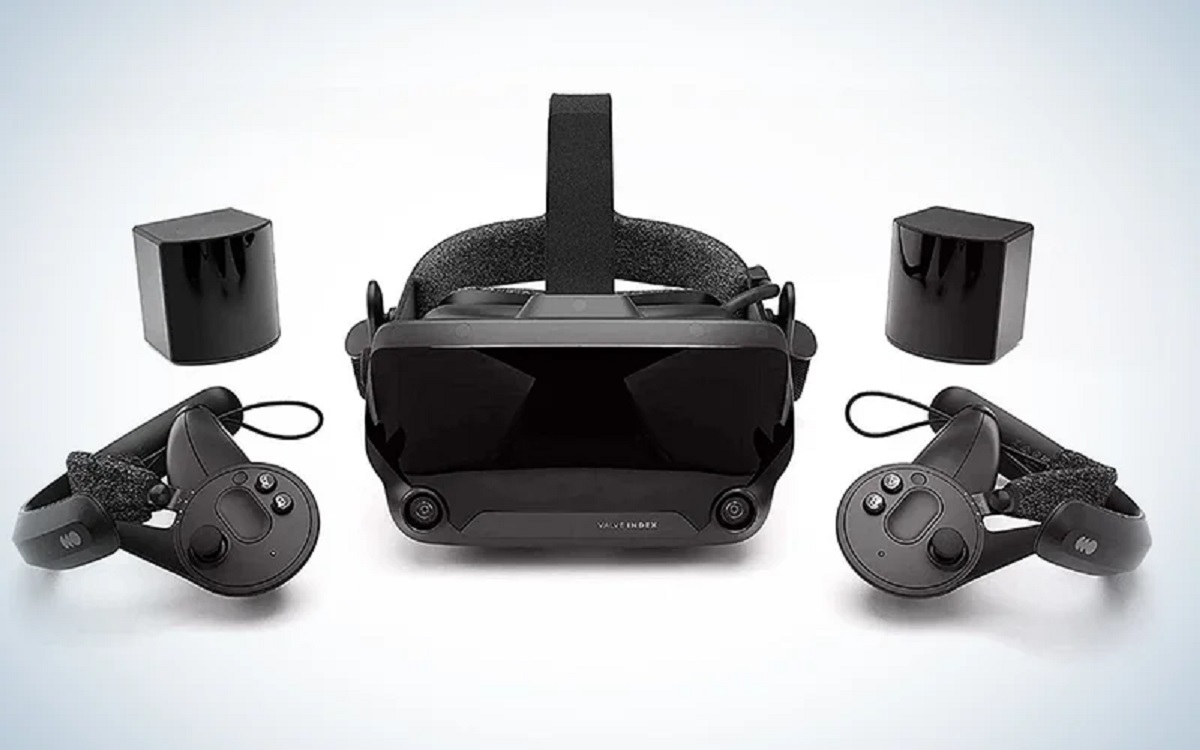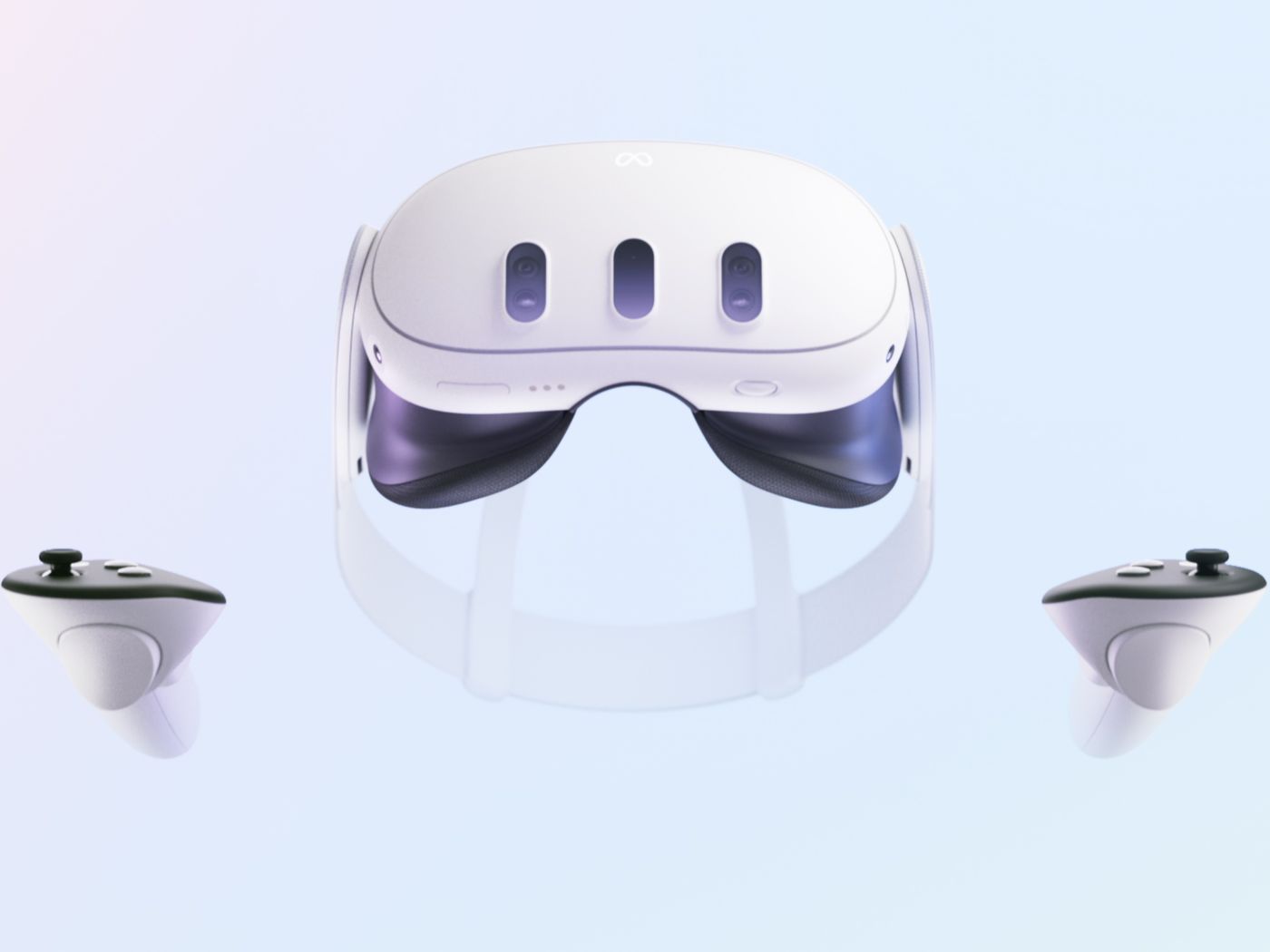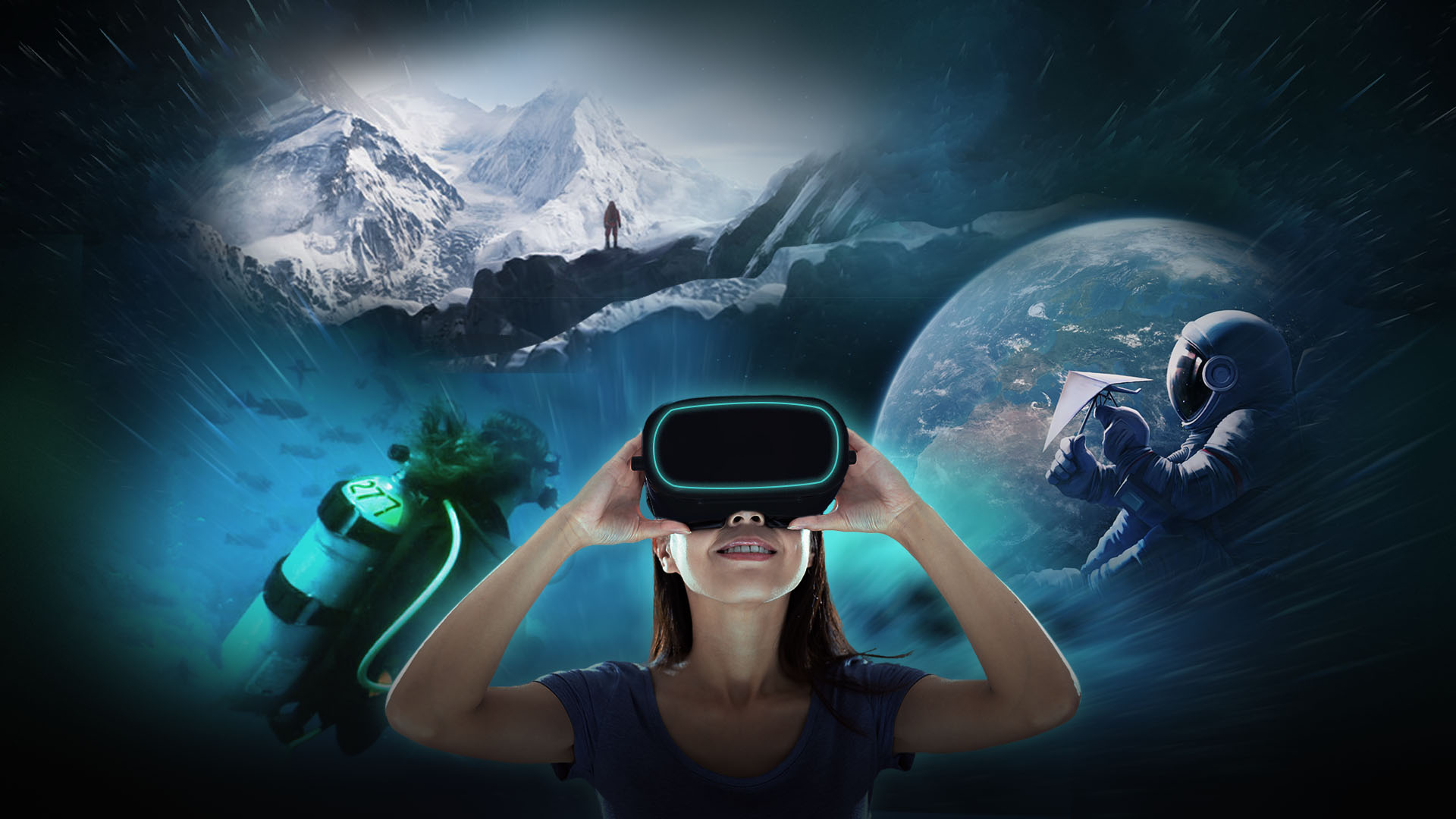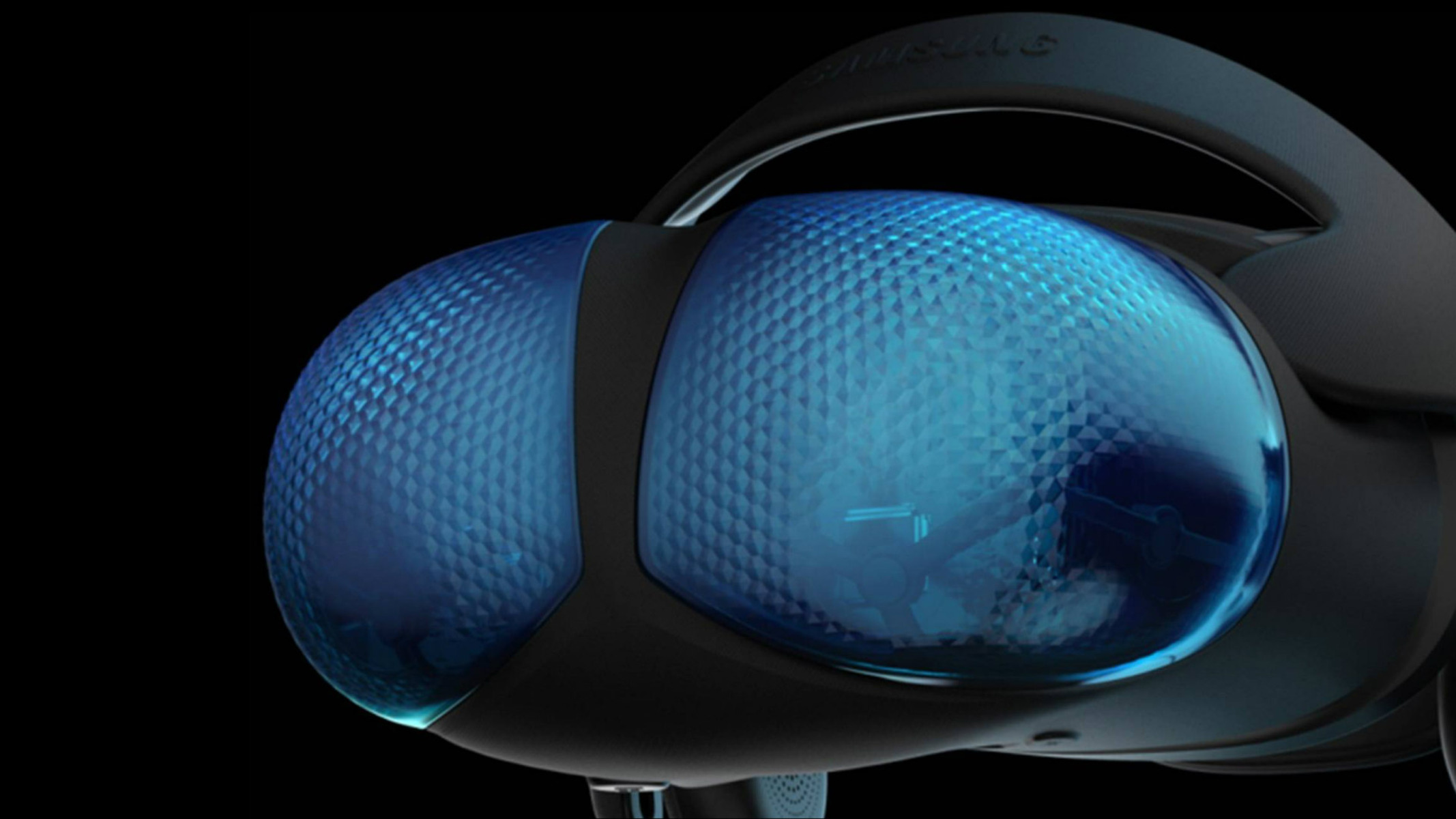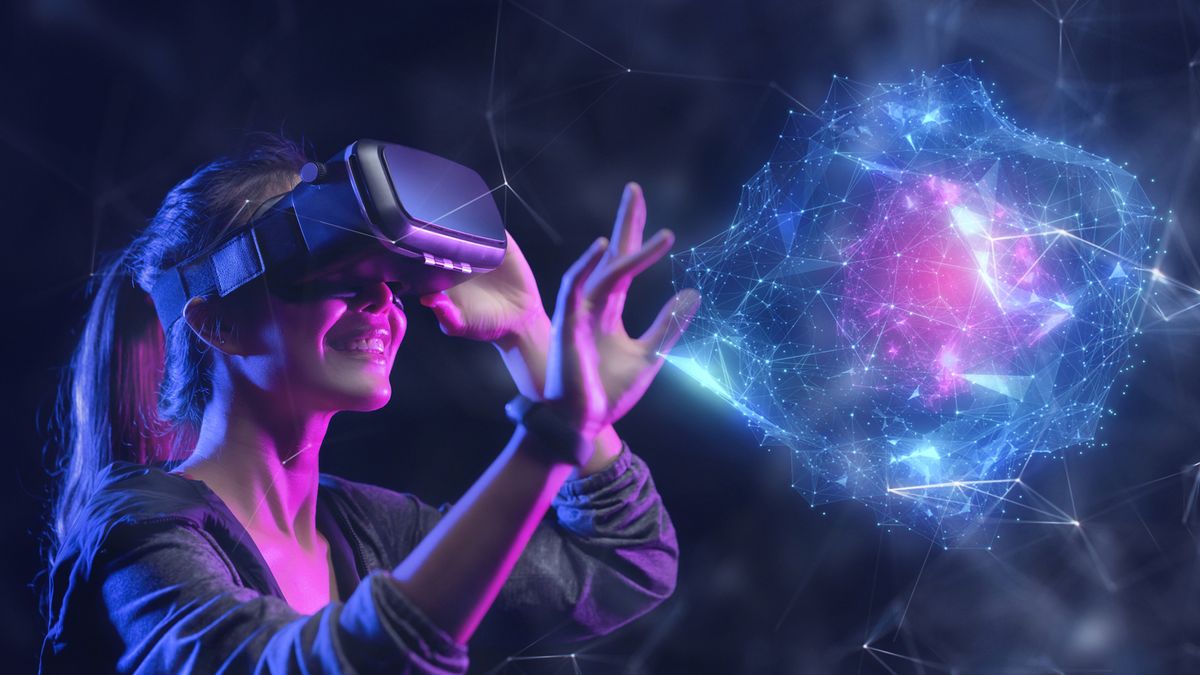Introduction
Virtual reality (VR) has revolutionized the way we experience digital content, immersing us in captivating and interactive environments. By donning a VR headset, users can transport themselves to far-off destinations, engage in thrilling adventures, or simply unwind in surreal landscapes. The technology behind VR has rapidly advanced, making it more accessible and engaging than ever before.
In this guide, we will delve into the realm of virtual reality, exploring the intricacies of VR headsets and providing a comprehensive overview of how to use them. Whether you're a seasoned VR enthusiast or a newcomer eager to embark on this digital journey, this guide will equip you with the knowledge and skills to navigate the immersive world of VR.
Virtual reality has transcended its initial novelty to become a powerful tool for entertainment, education, and even professional applications. With its ability to transport users to simulated worlds and scenarios, VR has found its way into various industries, including gaming, architecture, healthcare, and training simulations.
The allure of VR lies in its capability to transport users to alternate realities, fostering a sense of presence and immersion that traditional media cannot replicate. By simulating 3D environments and enabling interactive experiences, VR has redefined our perception of digital content consumption.
As we embark on this exploration of VR headsets, it's important to note that the technology continues to evolve at a rapid pace. From standalone headsets to tethered devices offering high-fidelity experiences, the market offers a diverse array of options to cater to varying preferences and requirements. Understanding the nuances of these devices and how to harness their potential is crucial for maximizing the VR experience.
In the following sections, we will delve into the intricacies of virtual reality, unraveling the types of VR headsets available, exploring the setup process, and delving into the navigation of VR environments. Additionally, we will uncover the diverse applications of VR and provide valuable tips for enhancing your virtual reality experience.
Get ready to embark on an exhilarating journey into the realm of virtual reality as we unravel the mysteries of VR headsets and equip you with the knowledge to unleash their full potential.
Understanding Virtual Reality
Virtual reality (VR) is a groundbreaking technology that has redefined the way we interact with digital content. At its core, VR aims to create a simulated environment that immerses users in a three-dimensional, interactive experience. By leveraging cutting-edge hardware and software, VR technology transports individuals to virtual worlds, allowing them to explore and interact with their surroundings in ways that were once unimaginable.
The essence of VR lies in its ability to engender a profound sense of presence and immersion. Unlike traditional media, VR transcends the confines of a screen, enabling users to feel as though they are physically present within the virtual environment. This is achieved through the integration of specialized headsets, motion-tracking sensors, and advanced display technologies that collectively work to create a seamless and captivating experience.
Central to the concept of VR is the notion of presence, which refers to the feeling of being fully immersed in a virtual environment. This sensation is often enhanced by the incorporation of spatial audio, haptic feedback, and realistic visuals, all of which contribute to a heightened sense of realism and engagement.
Moreover, VR experiences are designed to be interactive, allowing users to manipulate and engage with the virtual world. Whether it's reaching out to grab an object, exploring a virtual landscape, or interacting with virtual characters, the level of interactivity in VR fosters a sense of agency and control, further enhancing the immersive experience.
In essence, VR technology serves as a gateway to boundless possibilities, offering a platform for entertainment, education, and professional applications. From immersive gaming experiences that transport players to fantastical realms to virtual training simulations that replicate real-world scenarios, the potential applications of VR are vast and diverse.
As VR technology continues to evolve, with advancements in hardware capabilities and software development, the boundaries of virtual reality are continually being pushed. The integration of augmented reality (AR) and mixed reality (MR) further expands the horizons of immersive experiences, blurring the lines between the physical and digital worlds.
In the realm of virtual reality, the possibilities are limited only by the bounds of imagination, and the journey into this captivating domain is one filled with endless opportunities for exploration and discovery. As we unravel the intricacies of VR headsets and their applications, it becomes evident that virtual reality is not merely a technological innovation but a gateway to entirely new dimensions of human experience.
Types of VR Headsets
When it comes to virtual reality, the diversity of VR headsets available in the market reflects the rapid evolution and innovation within the realm of immersive technology. These headsets can be broadly categorized into three main types, each offering unique features and catering to distinct user preferences and requirements.
-
Standalone VR Headsets: Standalone VR headsets represent an all-in-one solution, integrating the display, processing power, and tracking sensors into a single, self-contained device. These headsets do not rely on external hardware or a tethered connection to a computer or gaming console, providing users with the freedom to experience VR untethered. Standalone VR headsets are ideal for individuals seeking convenience and portability without compromising on the immersive experience.
-
Tethered VR Headsets: Tethered VR headsets are designed to deliver high-fidelity VR experiences by connecting to a powerful computing device, such as a gaming PC or console, via cables. By harnessing the computational prowess of external hardware, tethered headsets can render intricate virtual environments with stunning visual fidelity and responsiveness. These headsets often feature advanced motion tracking and room-scale VR capabilities, making them a preferred choice for enthusiasts and professionals who prioritize performance and visual quality.
-
Mobile VR Headsets: Mobile VR headsets leverage the processing power and display capabilities of smartphones to deliver VR experiences. By slotting a compatible smartphone into the headset, users can access a variety of VR content and applications, making mobile VR headsets an accessible entry point for individuals looking to explore virtual reality without investing in dedicated VR hardware. While mobile VR may not offer the same level of immersion as standalone or tethered headsets, it provides a cost-effective and portable VR solution.
Each type of VR headset offers distinct advantages and considerations, catering to different usage scenarios and user preferences. As the VR landscape continues to evolve, new advancements and hybrid approaches are reshaping the market, further diversifying the options available to consumers.
Understanding the nuances of each VR headset type is crucial for making informed decisions based on individual needs and usage patterns. Whether it's the freedom of standalone VR, the high-end performance of tethered VR, or the accessibility of mobile VR, the diverse array of VR headsets ensures that there's a suitable option for every enthusiast, gamer, and professional seeking to embark on immersive virtual experiences.
How to Set Up a VR Headset
Setting up a VR headset is the crucial first step towards unlocking the immersive potential of virtual reality. Whether you've opted for a standalone, tethered, or mobile VR headset, the setup process typically involves several key components and considerations to ensure a seamless and captivating VR experience.
1. Hardware Assembly
Standalone and Tethered Headsets
For standalone and tethered VR headsets, the initial setup often involves connecting the headset to a compatible device or console. This may require plugging in cables for power, display output, and motion tracking sensors. Tethered headsets, in particular, necessitate the installation of software drivers and firmware updates to ensure compatibility and optimal performance.
Mobile Headsets
Mobile VR headsets, on the other hand, rely on the insertion of a smartphone into the designated slot. Ensuring that the smartphone is securely and correctly positioned within the headset is essential for aligning the display and enabling the necessary sensors for head tracking and motion input.
2. Calibration and Configuration
Once the hardware components are in place, calibration and configuration play a pivotal role in fine-tuning the VR experience. This involves setting up motion tracking sensors, adjusting the interpupillary distance (IPD) for optimal visual clarity, and configuring input devices such as motion controllers or handheld remotes.
3. Software Installation
Installing the requisite VR software and applications is the next crucial step. This may involve downloading VR-specific content from digital storefronts, setting up VR-compatible gaming or simulation software, and configuring system settings to ensure seamless integration with the VR headset.
4. Environment Setup
Creating an appropriate physical environment is essential for an immersive and safe VR experience. Clearing the designated play area of obstacles and hazards, ensuring adequate lighting conditions, and establishing boundaries for room-scale VR experiences are vital considerations to maximize user comfort and safety.
5. Firmware Updates and Maintenance
Regularly updating the firmware and software drivers for the VR headset is essential for accessing new features, performance improvements, and compatibility enhancements. Staying abreast of firmware updates and maintenance guidelines is crucial for ensuring the longevity and optimal functionality of the VR headset.
By meticulously following the setup procedures and best practices specific to your VR headset, you can embark on a journey into captivating virtual worlds and experiences. The setup process serves as the gateway to immersive storytelling, interactive gameplay, and educational simulations, empowering users to transcend the boundaries of reality and embrace the boundless possibilities of virtual reality.
Navigating VR Environments
Navigating virtual reality environments entails mastering the art of seamlessly traversing and interacting within immersive digital worlds. Whether you find yourself amidst fantastical realms, lifelike simulations, or interactive educational spaces, understanding the mechanics of movement and interaction in VR is pivotal for a captivating and seamless experience.
Movement and Teleportation
In VR environments, movement can be facilitated through various methods, each tailored to accommodate user preferences and mitigate motion sickness. Teleportation, a prevalent technique, allows users to select a location within the virtual space and instantaneously transport themselves to that point. This method, often preferred for its comfort and accessibility, is particularly effective in circumventing potential discomfort associated with traditional locomotion in VR.
Room-Scale and Seated Experiences
For experiences that support room-scale VR, users have the liberty to physically move within a designated play area, with the headset and motion controllers tracking their movements. This approach fosters a heightened sense of immersion and interactivity, allowing users to explore virtual spaces with natural movements. Conversely, seated experiences cater to scenarios where physical movement is limited, offering a more relaxed and accessible mode of interaction.
Interaction and Manipulation
In VR environments, interaction with virtual objects and elements is facilitated through motion controllers or handheld input devices. Whether it's picking up objects, solving puzzles, or engaging in virtual combat, the intuitive manipulation of virtual elements adds a layer of tactile engagement, blurring the boundary between the physical and digital realms. This level of interaction imbues VR environments with a sense of agency and control, empowering users to actively shape their virtual experiences.
Spatial Awareness and Safety
Maintaining spatial awareness while navigating VR environments is crucial to ensure user safety and prevent collisions with physical obstacles. Many VR systems incorporate boundary systems that alert users when they approach the limits of their play area, mitigating the risk of accidental collisions. Additionally, spatial audio cues and visual indicators within the virtual environment contribute to enhancing spatial awareness and immersion.
Multiplayer and Social Interaction
For VR experiences that support multiplayer functionality, navigating virtual environments extends beyond individual exploration to encompass social interaction and collaboration. Whether engaging in cooperative gameplay, virtual meetings, or social gatherings, the ability to navigate and interact with other users in shared virtual spaces enriches the social aspect of VR, fostering a sense of community and camaraderie.
Mastering the nuances of navigating VR environments empowers users to fully immerse themselves in captivating digital worlds, where exploration, interaction, and discovery converge to redefine the boundaries of human experience. As VR technology continues to evolve, the potential for increasingly sophisticated and intuitive navigation within virtual environments heralds an era of boundless creativity and engagement.
Using VR Applications
VR applications encompass a diverse array of experiences that cater to entertainment, education, training, and professional simulations. These applications harness the immersive potential of virtual reality to transport users to captivating realms and provide interactive experiences that transcend traditional media. Whether it's exploring fantastical landscapes, honing professional skills, or delving into educational simulations, VR applications offer a gateway to boundless possibilities.
Entertainment and Gaming
In the realm of entertainment, VR gaming stands at the forefront, offering an unparalleled level of immersion and interactivity. From adrenaline-pumping action titles to thought-provoking narrative experiences, VR gaming places players at the center of captivating virtual worlds, allowing them to engage with environments and characters in ways that transcend conventional gaming. The intuitive manipulation of virtual objects and the integration of spatial audio elevate the gaming experience, fostering a heightened sense of presence and agency.
Educational and Training Simulations
VR applications extend beyond entertainment to encompass educational and training simulations that leverage the immersive nature of virtual reality to facilitate experiential learning. From interactive historical reconstructions to virtual laboratory experiments, educational VR applications provide a dynamic platform for learners to engage with complex concepts and scenarios. Similarly, in professional settings, VR training simulations offer a safe and realistic environment for individuals to hone skills in fields such as healthcare, aviation, and engineering, fostering experiential learning and skill development.
Artistic and Creative Exploration
For artists and creators, VR applications serve as a canvas for immersive artistic expression and creative exploration. VR art platforms enable users to sculpt, paint, and design within three-dimensional spaces, transcending the constraints of traditional mediums and fostering a new realm of artistic expression. Additionally, VR applications for creative exploration encompass experiences such as virtual concerts, immersive storytelling, and interactive exhibitions, offering a novel avenue for artistic engagement and expression.
Social and Collaborative Experiences
VR applications are also reshaping social interaction and collaborative experiences, enabling users to connect with others in shared virtual spaces. Whether it's attending virtual events, collaborating on projects, or engaging in multiplayer gaming, VR applications foster a sense of presence and camaraderie, transcending geographical boundaries to unite individuals in shared digital environments. The social dimension of VR applications enriches the human connection, offering a unique platform for interaction and collaboration.
In essence, the realm of VR applications encompasses a rich tapestry of experiences that redefine the boundaries of digital interaction and engagement. As the technology continues to evolve, the potential for innovative and diverse VR applications heralds an era of immersive storytelling, experiential learning, and collaborative exploration, shaping the landscape of virtual reality for years to come.
Tips for a Better VR Experience
Embarking on a virtual reality (VR) journey is an exhilarating endeavor, and optimizing your VR experience can elevate immersion and enjoyment. Whether you're a seasoned VR enthusiast or a newcomer to the world of immersive technology, the following tips will empower you to make the most of your VR adventures.
1. Clear Your Play Area
Before delving into VR experiences, ensure that your designated play area is free from obstacles and hazards. Clearing the space of furniture, sharp objects, and potential tripping hazards not only enhances safety but also allows for unrestricted movement during room-scale experiences.
2. Optimize Lighting Conditions
Well-lit environments contribute to a more comfortable and visually engaging VR experience. Natural or artificial lighting that evenly illuminates the play area helps the VR headset's tracking system perform optimally, enhancing motion detection and spatial awareness.
3. Adjust Headset Comfort
Properly adjusting the VR headset for a snug and comfortable fit is essential for extended VR sessions. Ensuring that the headset's straps are securely fastened and the display is positioned correctly over your eyes minimizes discomfort and prevents distractions during immersive experiences.
4. Take Regular Breaks
While VR can be captivating, it's important to take periodic breaks to rest your eyes and reorient yourself in the physical environment. Incorporating short breaks between VR sessions helps alleviate potential discomfort and allows for a more balanced and enjoyable experience.
5. Experiment with Different Experiences
Explore the diverse array of VR content available, ranging from immersive games and simulations to artistic experiences and educational applications. Experimenting with varied VR experiences allows you to discover new realms of engagement and find content that resonates with your interests.
6. Engage in Social VR
Many VR platforms offer social and multiplayer experiences that enable interactions with other users in shared virtual spaces. Embracing social VR not only fosters connections with others but also adds a layer of camaraderie and shared exploration to your VR endeavors.
7. Customize Settings and Controls
Most VR applications and platforms offer customization options for comfort, movement, and interaction. Tailoring settings such as movement speed, comfort modes, and control configurations to suit your preferences can significantly enhance comfort and immersion during VR experiences.
8. Stay Hydrated
Engaging in VR experiences can be physically engaging, and it's important to stay hydrated during extended sessions. Keeping a water bottle nearby and taking periodic hydration breaks contributes to overall comfort and well-being during VR immersion.
By incorporating these tips into your VR routine, you can optimize your virtual reality experiences, ensuring comfort, safety, and enhanced immersion. The world of VR is teeming with captivating adventures and boundless possibilities, and by embracing these tips, you can embark on a journey of unparalleled digital exploration and enjoyment.
Conclusion
As we draw the curtains on our exploration of virtual reality and the intricacies of VR headsets, it becomes evident that the realm of immersive technology is a dynamic and transformative landscape. From the captivating allure of virtual environments to the diverse array of VR applications, the journey into virtual reality is one defined by boundless creativity, innovation, and human ingenuity.
The evolution of VR headsets, encompassing standalone, tethered, and mobile devices, reflects the rapid advancements in immersive technology, making VR more accessible and engaging than ever before. The ability to transport users to alternate realities, foster a sense of presence and agency, and facilitate interactive experiences underscores the profound impact of VR on entertainment, education, and professional domains.
The diverse applications of VR, spanning from entertainment and gaming to educational simulations and artistic exploration, underscore the versatility and potential of immersive technology. VR has transcended its initial novelty to become a powerful tool for storytelling, experiential learning, and collaborative engagement, reshaping the landscape of digital interaction and human experience.
As we look to the future, the horizon of virtual reality is brimming with promise, with advancements in hardware capabilities, software innovation, and the convergence of VR with augmented reality (AR) and mixed reality (MR) heralding an era of unprecedented possibilities. The potential for increasingly sophisticated and intuitive VR experiences, coupled with the fusion of virtual and physical worlds, paves the way for a future where the boundaries of reality are redefined and human creativity knows no bounds.
In the realm of virtual reality, the journey is one of continual discovery, where each immersive experience and technological advancement unveils new dimensions of human imagination and expression. As VR enthusiasts, professionals, and creators continue to push the boundaries of immersive technology, the world of virtual reality stands as a testament to the inexhaustible spirit of human innovation and the enduring quest to unlock the full potential of digital realms.
As we bid adieu to this exploration, we carry with us the knowledge and inspiration to embark on exhilarating journeys into the captivating world of virtual reality, where the boundaries of reality are transcended, and the human spirit is ignited with the promise of infinite digital horizons.







